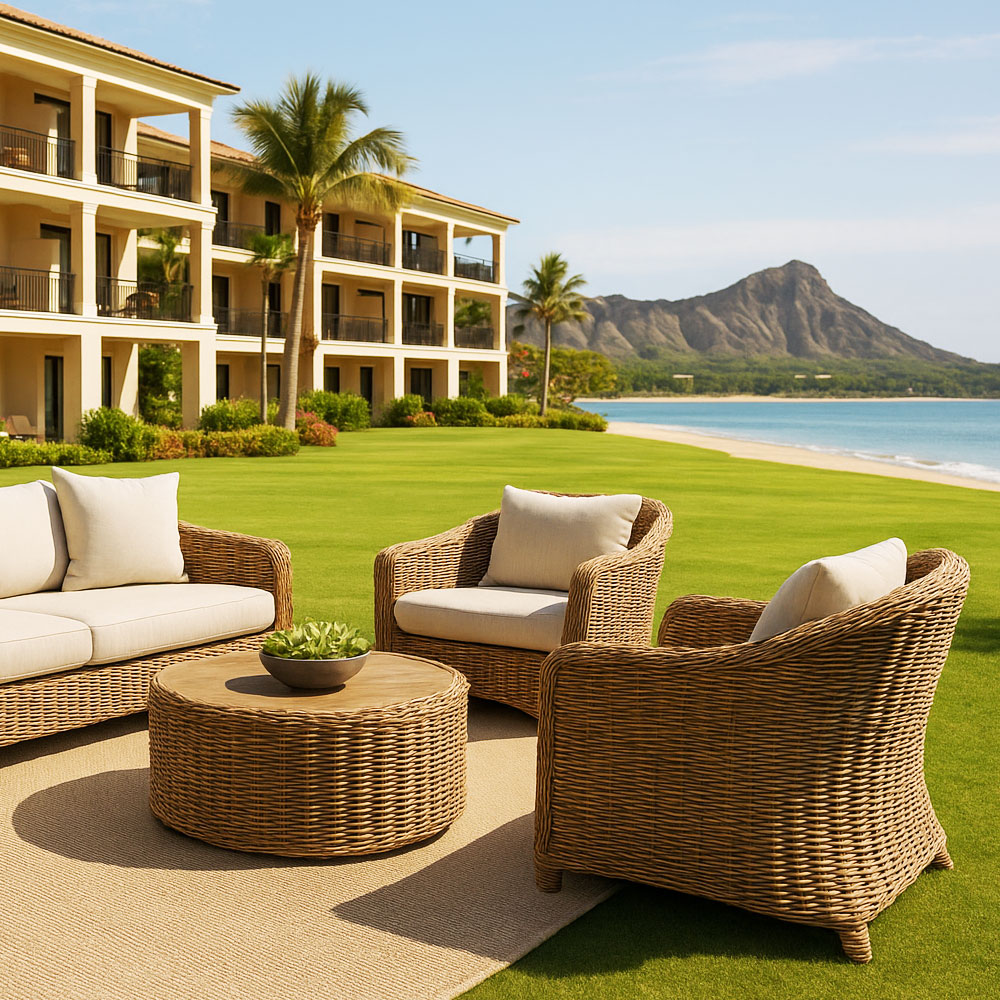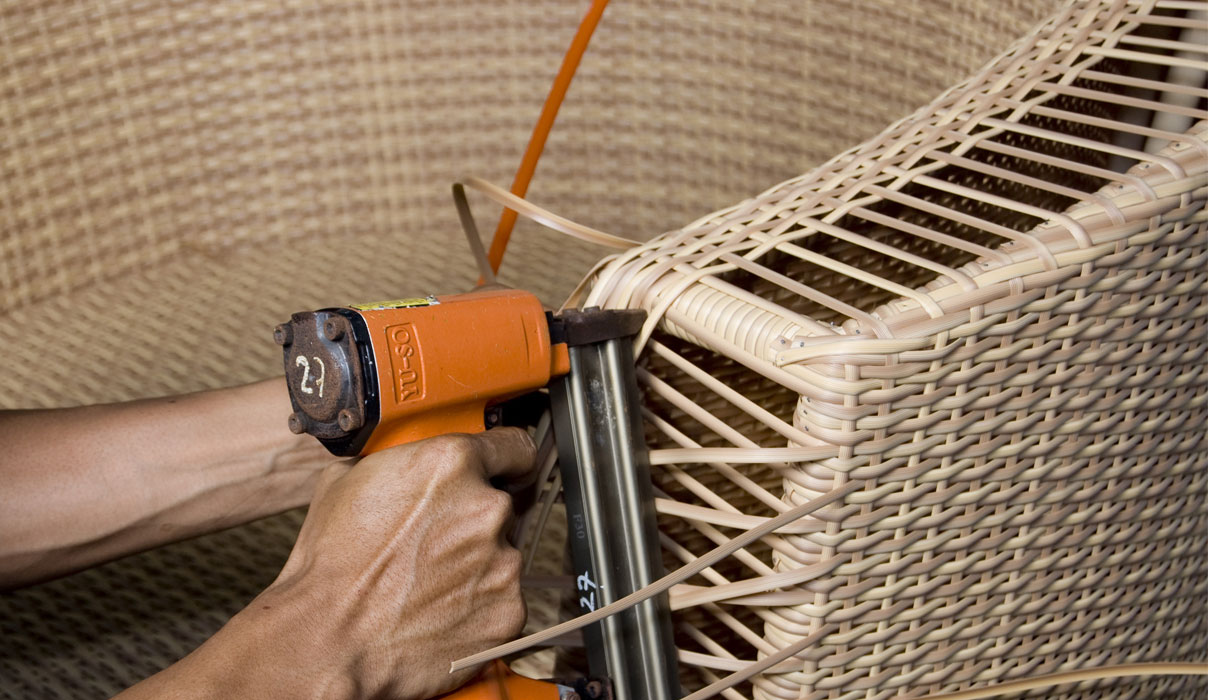Sustainable weaving materials is no longer a luxury thing, but has become a necessity. Consumers and industries alike are seeking eco-friendly solutions in every aspect of life, including home décor, furniture, and crafting materials. Among the many advancements in sustainable design, synthetic rattan and rope weaving materials have emerged as versatile, durable, and environmentally responsible alternatives to traditional natural fibers.
What Are Sustainable Weaving Materials?
Sustainable weaving materials are fibers and textiles designed to reduce environmental impact while maintaining durability and aesthetic appeal. Traditionally, natural materials such as rattan, jute, and bamboo were widely used for weaving furniture, decorative pieces, and accessories. However, excessive harvesting of these resources has led to deforestation and habitat destruction, making synthetic alternatives an essential part of modern sustainability efforts.
Synthetic materials, such as synthetic rattan and rope, offer durability, resistance to environmental conditions, and an eco-conscious approach by reducing reliance on natural resources. Unlike traditional weaving materials that can degrade quickly when exposed to harsh weather, synthetic options provide long-lasting solutions without the environmental drawbacks of deforestation or excessive production waste.
Synthetic Rattan: A Durable & Eco-Friendly Alternative
Synthetic rattan, often made from polyethylene (PE) or high-quality resin, mimics the look and feel of natural rattan without the ecological strain. It has become a preferred material for furniture, outdoor décor, and crafting due to its resilience against various environmental factors.
Benefits of Synthetic Rattan
- Weather Resistance – Unlike natural rattan, synthetic rattan is resistant to moisture, UV exposure, and temperature fluctuations, making it ideal for outdoor furniture and décor.
- Eco-Friendly Production – Some manufacturers use recyclable materials in the production of synthetic rattan, minimizing environmental waste.
- Durability – This material withstands wear and tear better than natural rattan, extending the lifespan of furniture and reducing replacement costs.
- Low Maintenance – Synthetic rattan does not require chemical treatments or frequent repairs, making it an easy-care option for homeowners and designers.
With sustainable production methods improving each year, synthetic rattan is helping industries shift toward more responsible and ethical manufacturing.


Rope Weaving: A Versatile & Sustainable Material
Rope weaving has become a popular trend in furniture design, crafting, and macrame projects. Synthetic rope materials provide a high-strength alternative to natural fibers, ensuring longer-lasting products with minimal environmental impact.
Types of Sustainable Rope Materials
- Polypropylene Rope – Lightweight, water-resistant, and durable, commonly used in outdoor furniture and marine applications.
- Recycled Polyester Rope – Made from repurposed plastic waste, reducing landfill contributions while maintaining strength and flexibility.
- Synthetic Hemp Rope – A non-biodegradable but durable alternative that mimics the appearance of natural hemp without excessive resource consumption.
Benefits of Rope Weaving
- Strength & Flexibility – Rope weaving materials create sturdy designs, perfect for chairs, tables, and decorative accents.
- Minimal Environmental Waste – Many synthetic ropes are made from recycled plastics, reducing overall pollution.
- Enhanced Aesthetic Appeal – Available in various colors and styles, rope weaving offers a modern twist on traditional craftsmanship.
As demand for eco-conscious furniture rises, rope weaving materials provide innovative design opportunities while promoting sustainable consumer habits.
Applications of Sustainable Weaving Materials
Whether designing furniture, home décor, or crafting unique DIY projects, synthetic rattan and rope weaving materials offer endless possibilities. Some popular applications include:
- Outdoor & Patio Furniture – Weather-resistant synthetic rattan chairs and rope-woven loungers bring sustainability to outdoor spaces.
- Handcrafted Accessories – Bags, baskets, and décor items made with durable rope weaving techniques provide eco-conscious style choices.
- Macrame & Artistic Creations – The flexibility of rope weaving allows artisans to create intricate macrame designs for wall décor, lampshades, and hanging planters.
- Eco-Friendly Commercial Uses – Restaurants, hotels, and event spaces opt for synthetic weaving materials to maintain aesthetic appeal while prioritizing sustainability.
Choosing the Right Sustainable Weaving Material
For those looking to embrace environmentally friendly designs, selecting high-quality sustainable weaving material is essential. Here are some key considerations:
- Material Composition – Look for recyclable or low-impact production methods when choosing synthetic rattan or rope materials.
- Weather Durability – Consider outdoor exposure levels when selecting furniture or décor made from synthetic fibers.
- Manufacturer Ethics – Research suppliers focused on ethical production and sustainability practices.
With the right choices, consumers and designers can reduce environmental harm while embracing stylish, durable woven materials.
Final Thoughts
Sustainability in weaving materials is about balancing innovation with environmental responsibility. As industries evolve, synthetic rattan and rope weaving materials prove that eco-friendly solutions can enhance durability, versatility, and aesthetics without compromising sustainability efforts. Whether for furniture, home décor, or artistic creations, these materials ensure a greener future for crafting and design.
For consumers and businesses alike, choosing sustainable weaving materials means investing in a more conscious and responsible lifestyle—where beauty meets sustainability.






Leave A Comment
You must be logged in to post a comment.